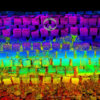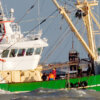The Fact Sheet "Environmental Monitoring” describes the methods used to alert dredging contractors to environmental impacts so they can be addressed quickly.
Dredging activities will always create some change in the existing environment. Awareness of these changes, of their impacts on the coastal defences, natural habitats and water quality, are essential to ensuring that the improvements made by the dredging activities do not have unintended negative consequences. The main role of environmental monitoring is to:
- examine changes in environmental conditions in areas where dredging is taking place,
- ensure that impacts are acceptable, and
- make certain that dredging methods are environmentally sound.
The value of environmental monitoring, before, during and after dredging and maritime construction, cannot be overstated. Generally speaking an environmental impact assessment will create a baseline of the situation at the given site and the environmental monitoring will record the state of the environment at this locality as work is in progress. The baseline, which recognises natural occurrences as well as human activities unrelated to dredging, such as shipping and fishing, establishes both seasonal and geographical variations before the start of a project.
By defining these various parameters, monitoring can put into context such issues as spill rates, noise levels, accuracy, turbidity and such. It can help determine if the dredging plant is fulfilling its operations appropriately. Monitoring during the lifetime of the project records the short- and long-term impacts caused by dredging and can demonstrate the degree of recovery of the environment from temporary impacts versus long-lasting impacts. Nowadays a dedicated environmental monitoring vessel can be equipped with a wide variety of equipment, such as echo sounders, a current profile meter, OBS sensors and DGPS navigation satellites. Any incidents where turbidity, noise or other disturbances can be affecting the environment will be detected almost immediately and operations can be stopped if necessary. A well-planned monitoring programme can predict what impacts may occur and, if they occur, what mitigating measures can be enacted.
The Fact Sheet "Environmental Monitoring” answers essential questions such as:
- What is Environmental Monitoring?
- Why is Environmental Monitoring necessary?
- When to monitor during a dredging project?
- How to design Environmental Monitoring?
- What are the commonly monitored parameters & associated equipment?
- What is future of Environmental Monitoring?









